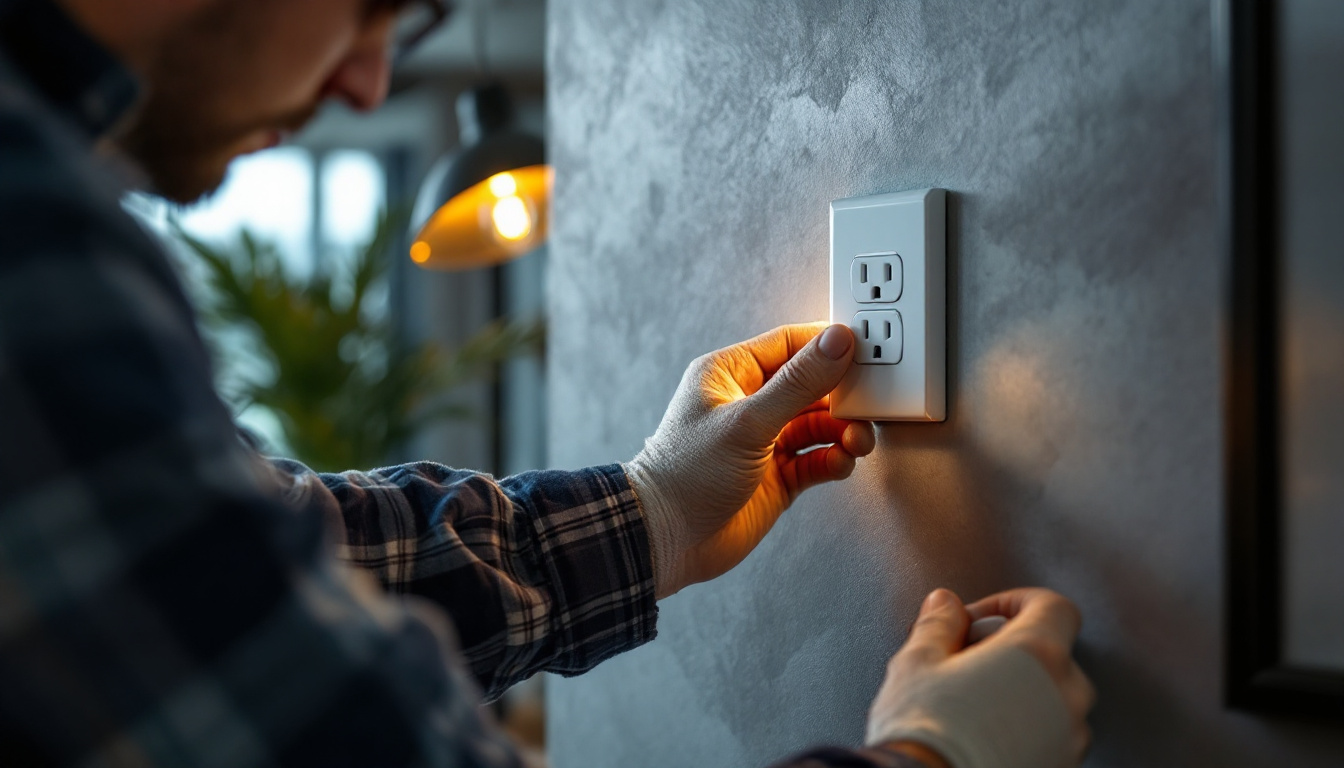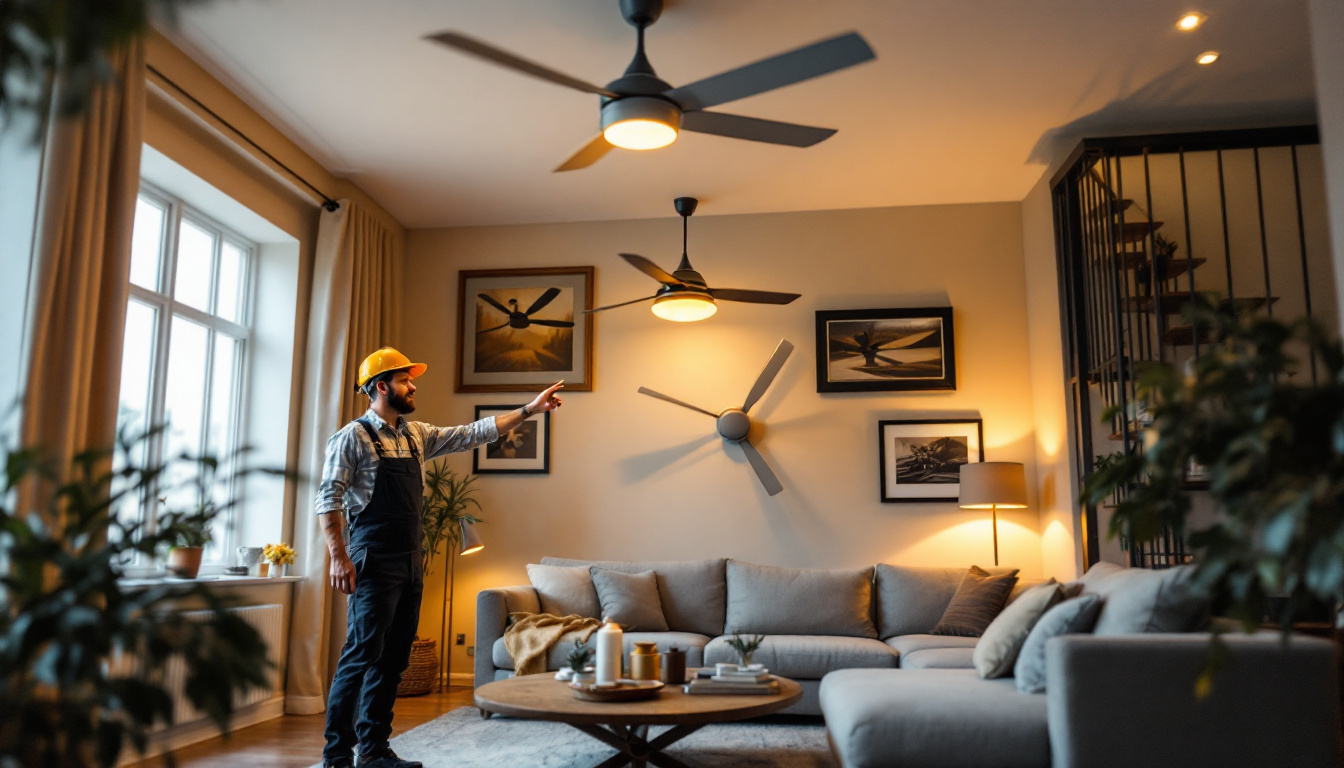
Choosing the right LED decoration light isn’t just about brightness or color. Many lighting contractors fall into the trap of selecting LEDs based solely on initial cost or aesthetic appeal, neglecting critical factors like color temperature, beam angle, and lumen output. These elements directly affect the ambiance and functionality of the space.
For example, installing LEDs with an inappropriate color temperature can drastically alter the mood of a room. Warm white (2700K-3000K) is ideal for cozy, inviting environments, while cool white (4000K-5000K) suits commercial or task-oriented spaces. Using the wrong temperature can make a space feel sterile or uncomfortable, undermining the design intent. This is particularly crucial in settings like restaurants or homes where the atmosphere is key to the experience. A warm glow can encourage relaxation and conversation, while a cooler tone might enhance focus and productivity in a workspace.
Beam angle is another frequently ignored aspect. Narrow beam LEDs focus light on specific areas, perfect for accent lighting, whereas wide beam LEDs distribute light broadly, suitable for general illumination. Misjudging this can lead to uneven lighting or unwanted glare, both of which detract from the overall effect. For instance, in a gallery setting, using narrow beam LEDs can highlight individual artworks, creating a dramatic effect, while a wider beam might wash out the details, leaving the viewer disengaged. Understanding the spatial dynamics of a room can help in making informed decisions that elevate the overall design.
Additionally, lumen output is a critical factor that often gets overlooked. Lumen measures the total amount of visible light emitted by a source, and selecting LEDs with the right lumen output ensures that a space is neither too dim nor overly bright. For instance, a living room may require around 1,500 to 3,000 lumens for a comfortable atmosphere, while a kitchen might need upwards of 5,000 lumens for effective task lighting. Balancing these outputs can enhance usability and comfort, making it essential to consider the specific needs of each room.
Moreover, the quality of light emitted by LEDs can vary significantly between products. Factors such as color rendering index (CRI) can impact how colors appear under artificial light. A high CRI (above 90) is ideal for spaces where color accuracy is crucial, such as in art studios or retail environments. In contrast, lower CRI values may suffice in areas where color fidelity is less of a concern. Understanding these nuances can lead to more thoughtful selections that align with the intended use of the space, ultimately enhancing the overall experience for occupants.
LED decoration lighting systems are only as good as their weakest component. Some contractors prioritize cost savings by using low-quality drivers, connectors, or fixtures, which can lead to premature failures or inconsistent performance. This not only affects client satisfaction but also increases maintenance costs and damages professional reputation. The ramifications of such decisions extend beyond immediate financial implications; they can also tarnish a contractor’s credibility in a competitive market, making it imperative to prioritize quality over short-term savings.
Compatibility issues are another common pitfall. Not all LEDs work seamlessly with dimmers or control systems, especially when mixing brands or types. Failure to verify compatibility can result in flickering, buzzing, or limited dimming range. Lighting contractors should always test components together before installation and consult manufacturer specifications carefully. Additionally, the use of mismatched components can lead to a less cohesive aesthetic, undermining the intended design vision and leaving clients dissatisfied with the final outcome.
The LED driver regulates power to the LED, ensuring stable operation. Using an underrated or incompatible driver can cause overheating, flickering, or early burnout. Contractors often underestimate the importance of driver quality, focusing instead on the LED itself. Investing in a reliable, appropriately rated driver is essential for long-term performance. Moreover, different types of LEDs may require specific drivers to achieve optimal efficiency and brightness levels, making it crucial for contractors to stay informed about the latest advancements in driver technology and compatibility.
Even the best LEDs and drivers fail if wiring is subpar. Loose connections, incorrect gauge wires, or improper insulation can cause voltage drops, heat buildup, or safety hazards. Lighting contractors must adhere strictly to electrical codes and best practices, double-checking all connections before powering up the system. Furthermore, the choice of wiring materials can significantly influence the overall performance and longevity of the lighting system. For instance, using high-quality, heat-resistant insulation can mitigate risks associated with overheating, while ensuring that the wiring is appropriately rated for the load can prevent potential electrical failures.
In addition to proper wiring, the layout and organization of cables play a vital role in the overall functionality of the lighting installation. A well-planned wiring scheme not only enhances the aesthetic appeal by reducing visible clutter but also facilitates easier troubleshooting and maintenance in the future. Lighting contractors should consider employing cable management solutions, such as conduits or raceways, to keep wiring neat and secure. This attention to detail can significantly improve the reliability of the lighting system and contribute to a more professional installation overall.
Installation is where design meets reality, and mistakes here can ruin even the most carefully planned LED decoration lighting. One frequent error is inadequate surface preparation. LEDs generate heat, so mounting surfaces must allow for proper heat dissipation. Installing LEDs on heat-sensitive materials without proper backing or spacing can shorten their lifespan dramatically. Additionally, the choice of adhesive or mounting hardware plays a significant role in the longevity of the installation. Using low-quality adhesives can lead to premature failure, as they may not withstand the heat generated by the LEDs or the environmental conditions they are exposed to. Therefore, selecting high-temperature resistant adhesives and ensuring a clean, smooth surface for installation can significantly enhance the durability of the lighting setup.
Another common issue is overloading circuits. LED strips and fixtures have specific current and voltage requirements. Connecting too many units in series or parallel without considering these limits can cause voltage drop and uneven brightness. Lighting contractors should calculate load carefully and distribute power appropriately. Furthermore, it is essential to incorporate appropriate fuses or circuit breakers to protect against overloads. This not only prevents damage to the LEDs but also enhances safety by reducing the risk of electrical fires. Regularly reviewing the circuit load and making adjustments as necessary can ensure optimal performance and longevity of the lighting system.
LEDs intended for indoor use may fail quickly if installed outdoors or in damp locations without proper protection. Moisture, dust, and temperature extremes can degrade LED components. Selecting fixtures with suitable IP ratings and ensuring proper sealing and ventilation is critical to avoid costly callbacks. Moreover, understanding the local climate and environmental conditions can inform better choices in materials and installation techniques. For instance, in coastal areas where salt air can corrode electrical components, using marine-grade materials and protective coatings can significantly extend the life of the installation. Additionally, employing weatherproof enclosures can safeguard against unexpected weather events, ensuring that the lighting remains functional and aesthetically pleasing.
Decorative LED installations often become permanent fixtures, but they still require maintenance or replacement over time. Contractors sometimes install LEDs in inaccessible locations, making future servicing difficult or impossible without damaging the surrounding structure. Planning for easy access can save clients time and money down the line. This could involve designing removable panels or utilizing adjustable mounting systems that allow for straightforward access to the LED components. Furthermore, documenting the installation process with detailed schematics can aid future technicians in locating and servicing the fixtures efficiently. Regular maintenance schedules should also be established to inspect and clean the fixtures, ensuring they operate at peak efficiency and maintain their intended aesthetic appeal.
Lighting contractors sometimes focus too much on technical specifications and not enough on the client’s goals. Understanding the purpose of the lighting-whether to create ambiance, highlight architectural features, or provide functional illumination-is vital. Without this insight, the final installation may not meet expectations.
Communication with clients is key. Contractors should ask detailed questions about the desired atmosphere, preferred colors, and control options. Demonstrating different lighting scenarios or mock-ups can help clients make informed decisions and avoid dissatisfaction.
Modern LED decoration lighting often integrates with smart controls for dimming, color changing, and scheduling. Overlooking this aspect limits the system’s versatility and client satisfaction. Contractors should be familiar with control technologies and offer options that align with the client’s lifestyle and budget.
Effective lighting design uses multiple layers-ambient, task, and accent-to create depth and interest. Relying solely on decorative LEDs without incorporating other lighting types can result in flat, uninspiring spaces. Lighting contractors should collaborate with designers or architects to develop balanced lighting plans that enhance both function and aesthetics.
Once the installation is complete, skipping thorough testing is a costly mistake. Contractors must verify that all LEDs operate correctly, dim smoothly, and integrate properly with control systems. Identifying issues early prevents client complaints and expensive rework.
Documentation is equally important. Providing clients with detailed information about the installed products, wiring diagrams, and maintenance instructions empowers them to manage their lighting system effectively. It also protects contractors in case of future disputes or warranty claims.
Testing should include checking for flicker, color consistency, and correct operation of dimmers and controllers. Measuring voltage and current at various points ensures electrical safety and performance. Contractors who adopt a checklist approach reduce the likelihood of overlooked problems.
Clients often don’t understand how to operate or maintain their LED decoration lighting. Contractors should offer demonstrations and written guides covering basic troubleshooting, cleaning, and replacement procedures. This builds trust and enhances the overall customer experience.
LED decoration lighting offers tremendous opportunities for creative and energy-efficient designs. However, lighting contractors must avoid common mistakes that compromise quality, durability, and client satisfaction. Selecting the right LEDs, ensuring component compatibility, applying proper installation techniques, understanding client needs, and thorough testing are all crucial steps.
By paying close attention to these areas, contractors can deliver stunning, reliable lighting solutions that stand the test of time and enhance their professional reputation. The key is combining technical expertise with clear communication and meticulous execution.
Ready to elevate your lighting projects while avoiding the common pitfalls outlined in this article? Choose LumenWholesale for your LED decoration lighting needs. Our spec-grade lighting products promise quality and durability, ensuring your installations impress clients and stand the test of time. With unbeatable wholesale prices and the convenience of free shipping on bulk orders, you can trust us to provide the best value without any hidden fees. Don’t compromise on quality or cost—visit LumenWholesale today and experience the ideal combination of excellence and affordability for all your lighting contractor needs.

Discover the essential fluro light wiring diagram every lighting contractor must know.

Explore essential insights for lighting contractors in our comprehensive guide on wall receptacles.

Discover the ultimate guide to purchasing ceiling fans, tailored specifically for lighting contractors.

Explore innovative strategies from expert lighting contractors on enhancing outdoor spaces with dusk till dawn lighting solutions.